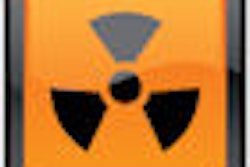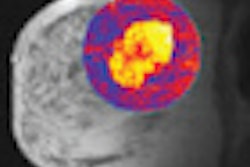Using software to partially automate and centralize routine quality control (QC) of digital mammography could improve the modality's consistency and reliability, while streamlining QC procedures, according to research presented this week at the American Association of Physicists in Medicine (AAPM) meeting in Vancouver, British Columbia.
Martin Yaffe, PhD, and colleagues from the Sunnybrook Research Institute in Toronto conducted a pilot test of the software, called GLADYS (generic LUCMFR automatic analyzing DICOM server), to evaluate the feasibility of using it to monitor the results of quality control testing on digital mammography units in the Ontario Breast Screening Program, which includes 190 mammography units and serves more than 500,000 women across Canada.
The intent of the software is to make the quality control process more efficient for technologists and physicists, and to improve the consistency of test performance and results interpretation. The study data were presented by Aili Bloomquist, a systems engineer on Yaffe's team.
Medical physicists at Sunnybrook have provided quality control for provincial breast screening programs for more than 20 years, ensuring that the equipment is operating properly and taking image quality measurements, according to Yaffe.
"We've been interested in trying to improve our QC program by incorporating computer techniques and remote monitoring," he told AuntMinnie.com. "We got the idea from a group at the University Hospitals Leuven in Belgium, who originally developed the algorithm to do this."
GLADYS was installed at four pilot screening sites, Yaffe said. All images acquired on the sites' mammography systems were automatically sent to GLADYS over PACS networks.
The software recognizes QC images by predetermined patient names and performs an automated analysis, measuring various parameters and generating summary thumbnail images. Clinical images are deidentified and technique factors and dose are extracted for tracking. Quality control and dose reports are sent by email to the central monitoring site, according to Yaffe.
"We can compare one site's quality control data against itself, or to sites with comparable technology, or even to sites using other vendors' products," he said.
GLADYS has also been installed at two other screening sites for a total of six machines using the program. Quality control and dose data have been collected for five months, and 285 quality control images have been analyzed, Bloomquist explained. Artifacts and changes in automatic exposure control or detector behavior were identified, and dosimetry information from 18,282 patient images was collected, with an average mean glandular dose of 1.3 mGy.
The team found that the automated analysis worked well and reduced the technologist's quality control workload. The group is working to add features that allow for automated immediate feedback of test results to the remote sites.
Yaffe's group plans to implement the software over more sites in the coming months.
"We started with a pilot to get data and fine-tune the system," he said. "We expect this software to improve the efficiency of doing quality control and to cut the response time when there's a problem with a machine."




















